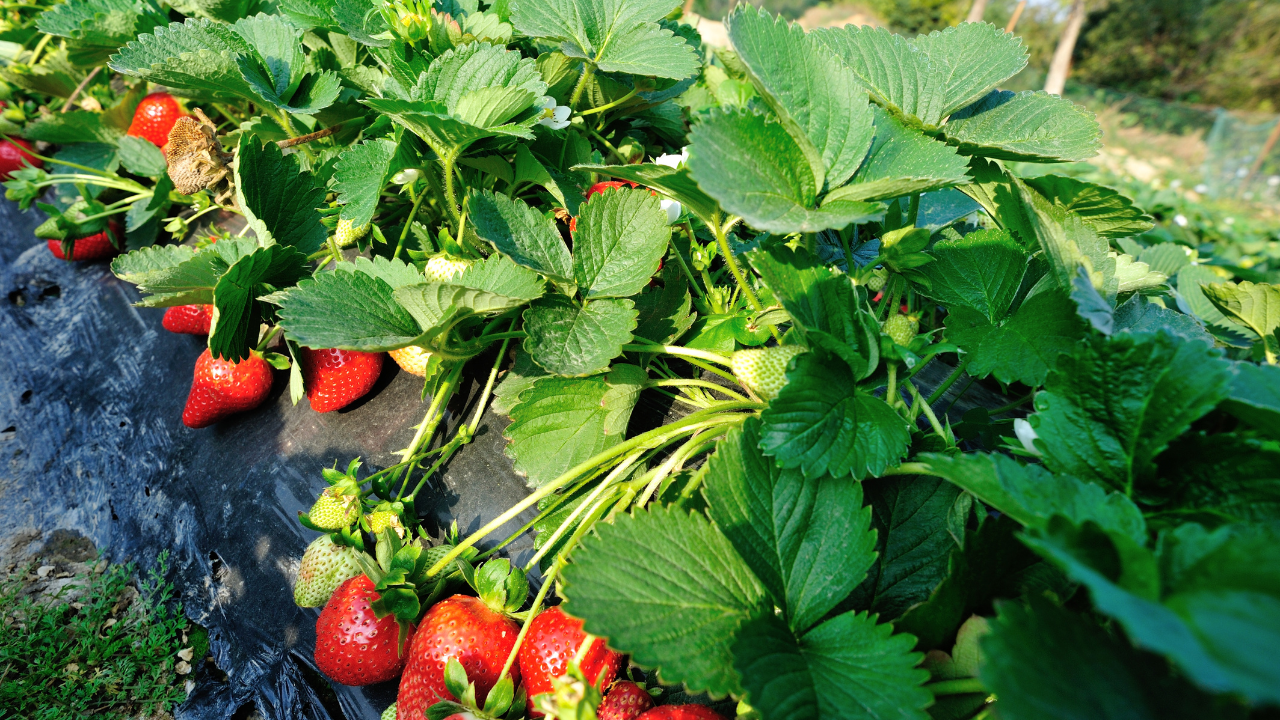Hey, do you have questions about your garden or house plants? Then why not let me answer those questions for you? All you have to do is go to my video and place your question in the comments and allow me 24 hours and I will help you as best I can. I am a Texas Master Gardener and helping the gardening community is what we pride ourselves upon. So if you are a grower in the North Texas area or abroad and you have questions about soil, plants, watering or pests, I am your guy. Just let me know what you need in the comments, and I will help to the best of my ability.
Tag Archives: north texas gardeners
Our Fragrant Oasis: Cultivating a Heat-Loving Herb Garden in North Texas
Hello, fellow green thumbs! Brace yourselves for an exciting adventure as we embark on creating a lush, fragrant oasis in the heart of North Texas. Today, my five-year-old son, Gray, and I are thrilled to share our journey of planting and nurturing a vibrant herb garden that will not only survive but thrive in the scorching Lone Star State summers.
Thanks to the generosity of a dear friend, we’ve been gifted a delightful assortment of heat-loving seedlings, each one carefully selected to withstand the harsh Texas climate. With our trusty trowels in hand and a childlike sense of wonder, we’re about to give these tiny plants a new home in larger pots, providing them with the space and care they need to flourish.
Our botanical lineup for today includes five delightful herb varieties that promise to elevate our culinary creations and tantalize our senses:
Orange Mint

Orange Mint: This zesty mint variety is a true Texas trooper, thriving in the heat when given partial shade and consistently moist, well-draining soil. Its vibrant citrusy aroma will add a refreshing twist to our summer beverages and dishes.
Banana Mint

Banana Mint: Like its citrus cousin, this unique mint requires partial shade and well-draining soil to prevent root rot. However, its sweet, fruity fragrance reminiscent of ripe bananas will make a delightful addition to desserts and refreshing teas, transporting us to tropical paradises.
Golden Sage

Golden Sage: A true drought warrior, this golden-hued sage is native to the Mediterranean and will revel in our summer sun and heat. Its earthy and slightly peppery notes will undoubtedly elevate our savory dishes, bringing a touch of Mediterranean magic to our kitchen.
Oregano

Oregano: A hardy perennial that can withstand the intense Texas summers with proper watering and full sun exposure. This aromatic herb will provide us with a steady supply, perfect for adding depth and flavor to sauces, marinades, and our beloved Texas-style pizza toppings.
Deep Opal Basil

Dark Opal Basil: While basil can be finicky in North Texas, this deep purple variety is more heat-tolerant than its green counterparts. With afternoon shade and consistent moisture, this basil is sure to be a showstopper, promising to elevate our pesto, caprese salads, and countless Italian-inspired dishes.
Bonus: Chinese Amaranth

If you’re looking to add a touch of vibrant color and versatility to your garden, look no further than the captivating Chinese amaranth (Amaranthus tricolor). This stunning plant, also known as Joseph’s coat, is a true showstopper with its eye-catching foliage that ranges from shades of red, purple, green, and even orange.
Native to Asia, this amaranth variety is not only a feast for the eyes but also a delicious and nutritious addition to your kitchen. Its tender leaves and shoots are packed with vitamins, minerals, and antioxidants, making them a nutritional powerhouse in salads, stir-fries, and even as a substitute for spinach or kale.
Growing Chinese amaranth is a breeze, making it an excellent choice for both experienced and novice gardeners alike. This annual thrives in full sun and well-draining soil, reaching heights of up to 3 feet tall. Its upright growth habit and striking foliage make it a perfect candidate for ornamental borders, edible landscapes, or even as a stunning centerpiece in containers.
One of the best things about this amaranth variety is its tolerance for heat and drought conditions. Once established, it can withstand periods of dry weather, making it a reliable choice for gardeners in warmer climates or those looking to conserve water.
But the benefits of Chinese amaranth don’t stop there. Its gorgeous plume-like flowers are not only visually appealing but also edible, adding a burst of color and crunch to your culinary creations. And if that’s not enough, the seeds can be harvested and used in baking or even as a nutritious addition to granola or trail mixes.
So, whether you’re a seasoned gardener seeking a unique and flavorful addition to your edible garden or a newcomer looking to add a pop of color and nutrition to your outdoor space, Chinese amaranth is a must-try. With its stunning good looks, versatility in the kitchen, and easy-going nature, this plant is sure to become a beloved staple in your garden for years to come.
As Gray and I carefully transplant each seedling into its new home, we’re mindful of their specific needs, ensuring they receive the right amount of sunlight, water, and soil amendments to thrive in our region. We’ll be incorporating techniques like mulching, proper spacing, and strategic shading to create the perfect growing environment for our heat-loving herbs.
But this adventure isn’t just about gardening – it’s a heartwarming tale of a father and son bonding over their shared love for nature and the joy of nurturing life. As we work side by side, Gray’s infectious enthusiasm and curiosity remind me of the simple pleasures in life, and the importance of cultivating patience, perseverance, and appreciation for the natural world around us.
Stay tuned, dear readers, as we document our journey through stunning photos and captivating videos, taking you along for every step – from the first sprouting seedlings to the lush, thriving plants filling our garden with their vibrant colors and intoxicating scents. Until next time, happy gardening in the Lone Star State!
Hashtags: Hashtags: #TexasHerbGarden #NorthTexasGardening #HeatLovinHerbs #HerbGardenTips #GrowingHerbsInTexas #FatherSonGardening #GardeningWithKids #ContainerHerbGarden #MintGarden #BasilGarden #SageGarden #OreganoGarden #AromaticHerbs

Strawberry Fields Forever
A Bounty of Berries for North Texas Gardeners

Growing your own strawberries in North Texas is a delightful endeavor that adds sweet flavor to your garden and your table. Plucking ruby-red, sun-ripened strawberries straight from the vine is a luxury that you can afford yourself with a bit of gardening savvy and the right timing.
The prime time to plant strawberries is during fall. It is during this season that the warm North Texas sun gently transitions into milder temperatures, creating the perfect climate for your strawberries to establish themselves. To ensure the luscious taste of summer in your berries, look for a sunny patch in your backyard. Once you’ve found the perfect spot, the key is to mix in plenty of compost to create that light, loamy soil that strawberries relish.
Choose robust varieties such as Chandler and Camarosa to plant. These varieties are well-suited for North Texas climates and should be set several weeks before the anticipated first frost, which typically occurs in late October or November. This timing allows your plants to settle in before they enter winter dormancy. Come summer, and your anticipation will be rewarded with a bountiful harvest of juicy strawberries.
However, if you missed the fall planting window, don’t dismay! North Texas garders have a second chance in spring to enjoy the berry bounty. When the tail end of winter has passed, usually between late February and early March, it’s time to think about strawberries again. If this is your plan, look for heat-tolerant strawberry varieties like Sweet Charlie and Alpine, which thrive in the warmth.
No matter the season, soil preparation remains a constant. To ready your spring beds, break up the soil and enhance it with riches from compost. Remember to give each plant room to breathe; spacing is crucial for preventing crowding, making your strawberry plants less vulnerable during the sweltering summer months.
There’s an art to nurturing strawberries that involves more than just planting. Both fall and spring cultivators need to be vigilant about the weather, shielding their young plants from late freezes or scorching heatwaves. Watering is also a meticulous task—strawberries need moisture, but their roots despise being waterlogged. And consider opting for organic care, avoiding harsh chemicals to keep your garden both bountiful and healthy.
In North Texas, your strawberry patch is a labor of love that requires TLC, but rest assured, the hard work pays off. As you care for your strawberries, envision the reward: a summertime filled with the quintessential taste of fresh, juicy berries that encapsulate the essence of sweet sunshine.
Sink your teeth into the fruits of your own labor and let the flavor inspire you. Imagine your homegrown strawberries turned into homemade shortcake, spread over freshly baked scones, or reduced down into a rich, flavorful jam. Not only will you have the pleasure of enjoying these treats, but you’ll also have the satisfaction of knowing they came from your own garden.
The possibilities are endless with a strawberry patch in your backyard. So why hesitate? Embrace the gardening challenge and turn your North Texas home into a haven for strawberry delight. Let your dreams of gardening glory flourish, and savor the joy of homegrown berries with each berry-laden plant.
Enjoy life, Enjoy Family and Enjoy your garden!
-Gray
